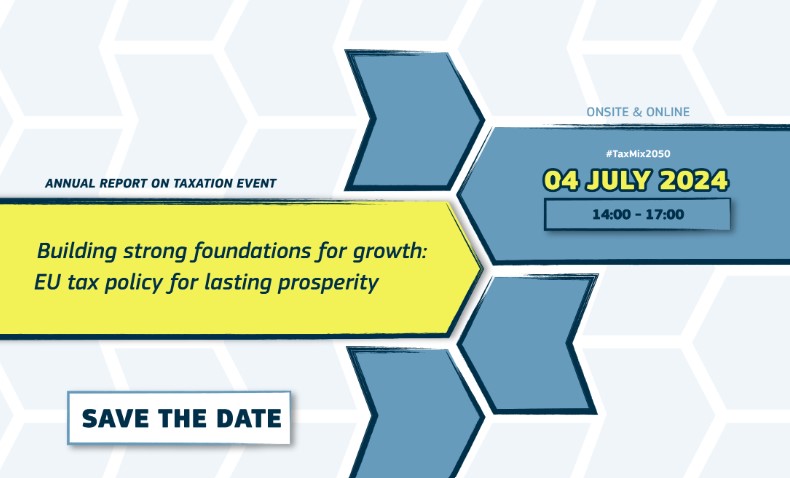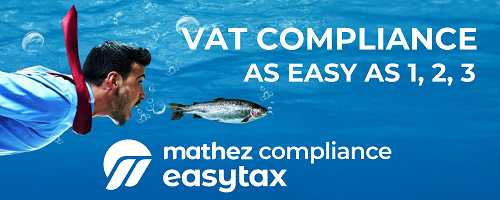The 2024 Annual Report on Taxation (ART) provides an analysis of taxation and tax systems in the European Union (EU), including the development of the tax mix and recent reforms at national and EU level. It discusses different tax bases and types of taxes, such as personal and corporate income taxes, value added taxes, and environmental taxes. The report also focuses on the role of taxation in supporting a competitive EU economy, in line with the EU’s priority to preserve European competitiveness and prosperity.
Source op.europa.eu
3.5 The Value added tax – an important consumption tax with revenue potential
3.5.1 The Value Added Tax (VAT): Trends in rates and revenues
VAT is the most important consumption tax in all Member States. In 2022, EU-27 revenues from consumption taxes made up about 11% of GDP and 27.3% of total revenues, slightly decreasing compared to 2021. VAT is the most important consumption tax in all Member States contributing between 15% and 35% of total revenues. While revenues from the total consumption tax base have slightly decreased, VAT revenues have further increased in 2022 to 7.5% of GDP (from 7.4% of GDP in 2021) which makes up 18.6% of total tax revenues.
The importance of VAT varies across tax systems in the EU. As shown in Figure 48, the share of revenue coming from VAT in 2022 is highest in Croatia (35%), Latvia (31%) and Bulgaria (29%) and lowest in Belgium (15%), Luxembourg (16%) and France (17%). Greece is the country that collects the highest revenues from consumption taxes other than VAT. Overall consumption taxation is most important for Hungary.
VAT is a significant and growing source of revenue. In the EU, importance of VAT has been increasing slowly but steadily from 17.1% of total revenues twenty years ago, to 17.4% in 2013 and to 18.6% in 2022. At the same time the relative importance of VAT in the tax mix has become more varied across Member States. This implies that some Member States in 2022 rely more on VAT and others less, compared to ten years ago. At the country level, the share of revenues has slightly increased in most countries, while they have decreased most notably in Romania, Luxembourg, and Bulgaria.
Following a period of rate increases (2009-2015), the EU-27 average standard VAT rate stabilised and then remained almost unchanged from 2016 to 2023 at 21.5%. The lowest standard rates are registered in Luxembourg at 16% in 2023 (went back up to 17% in 2024) and Malta (18%). On the other hand,
the highest VAT rate is found in Hungary (27%), followed by Sweden, Denmark, and Croatia (all at 25%). VAT rates are depicted in Table A2.3 in Annex 2.
The implicit tax rate (ITR) on consumption in the EU in 2022 amounts to 17.2%, a decrease by 0.7 pp compared to 2021. The ITR is the ratio between the revenue from consumption taxes and the estimated base. Before decreasing in 2022, the ITR on consumption in the EU-27 increased to 17.9% in 2021 (0.8 pp more than in 2020), the highest value registered since 2009. In 2022, the ITR on consumption decreased in all Member States except Greece, Cyprus, and Sweden, remaining unchanged in Luxembourg.
Reduced rates and exemptions are important policy levers of the VAT. Some goods and services must legally be exempted from VAT. Other goods and services may be subject to reduced rates (or zero rates). While countries have considerable flexibility in setting rates, several exemptions have been agreed on at the EU level. The revenues foregone due to exemptions and rate reductions are called the VAT policy gap since they result from policy decisions narrowing the tax base or reducing liability for specific sectors or specific goods and services. Reduction and exemptions aim to meet distributional objectives and incentivise consumption of specific goods and services.
The approach to reduced rates is coordinated at the EU level. A VAT rates reform came into force in 2022 (see Council Directive (EU) 2022/542). This directive made changes to the VAT Directive 2006/112/EC and provides EU member states with more flexibility in determining reduced VAT rates. It enables Member States to apply a maximum of two reduced rates of a minimum of 5%, and within certain limits a reduced rate below 5% and even an exemption with deduction of the VAT paid at the preceding stage (a so-called zero rate) to supplies of goods and services listed in Annex III of the VAT Directive. This reform took into account the European green agenda by including in the list of goods and services to which a reduced rate can apply, solar panels, electric bicycles, highly efficient low emissions heating systems, and a number of other services. Moreover reduced rates will be phased out for fossil fuel (by 2030) and chemical pesticides (by 2032).
Reduced rates are the central lever for national policymakers to determine the extent of revenues foregone. In 2021, the EU-27’s average VAT policy gap was approximately 44.9% of notional ideal revenue (i.e., VAT revenues that could have been collected without any VAT rate reductions or VAT exemptions) (91). About 23% of this gap was caused by reduced rates, the rest is due to exemptions. However, only a fraction of about 12% of the policy gap is considered as actionable exemption gap. The actionable policy gap of the EU is thus estimated to be about 15.7% of the notional ideal revenue (or 35% of the total policy gap).
The accumulated revenue implications of reduced rates can be considerable. Figure 49 shows the estimated rate gap as share of notional ideal revenue (92). Given overall VAT revenues of about EUR 1 079 billion in 2021 and comparing these to the notional ideal revenues, a back-of an envelope calculation indicates potential additional revenues of up to EUR 230 billion. Based on these estimates, actual revenues collected from VAT in the EU could be up to 20% higher if reduced rates were abandoned. Potential additional revenues as a share of revenues collected differ across countries and tend to be proportional to the policy rate gap.
3.5.2 Tax compliance, tax evasion and fraud
The design of VAT facilitates tax collection and supports compliance, albeit at the cost of high administrative effort. The VAT is collected at each step in the value creation process by suppliers, then suppliers can reclaim the VAT paid on their inputs. This way the full value added tax is paid by the final consumer while revenues have been collected throughout the value creation process, safeguarding revenues against noncompliance. However, this process results in relatively high administrative efforts.
The VAT compliance gap measures foregone VAT revenues due to non-compliance. Specifically, the VAT compliance gap is an estimate of the difference between the expected theoretical VAT revenue, known as the VAT Total Tax Liability (VTTL), and the actual collected VAT revenue. It reflects non-compliance with VAT payment obligations and encompasses various forms of non-compliance, including legal loopholes, evasion, fraud, administrative errors, and bankruptcies.
The EU VAT compliance gap amounted to 5.3% of the VTTL in 2021 on average, but there are significant disparities between Member States. During the past 10 years, almost all Member States could significantly reduce their VAT compliance gap, albeit to varying degrees. Notable improvements in compliance between 2012 and 2021 could be ascertained, for instance, for Slovakia, Poland, Italy and Hungary. Romania,
Malta, and Greece continue to register higher compliance gaps than other Member States in 2021, reflecting specific challenges in these countries. Romania retained the highest gap at 36.7%. Conversely, the Netherlands, Finland, Spain, and Estonia consistently showed lower gaps, indicating robust compliance practices and lower non-compliance levels. The compliance gap per Member State is shown in Figure 50.















